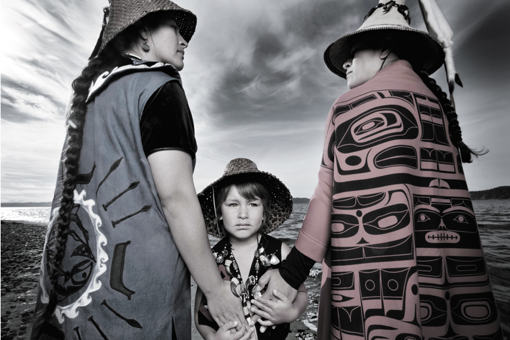Matika Wilbur left a budding career as a Seattle photographer two years ago to embark on an American road trip unlike any other. Her destination: the diverse lands and communities of the now 566 federally recognized Native American tribes in the United States. “I was 28 years old and had a fabulous gallery and a great apartment,” she explains of her life-altering decision. “But do a Google search of ‘Native American’ and what do you find?”
Image after archaic, stereotypical, racist, or over-sexualized image propelled Wilbur’s one-woman project to redefine perceptions of Indigenous peoples through photography. Her cross-country odyssey, called Project 562 (the number of recognized tribes when she began her project), has already garnered national attention—and not just because of the remarkable images she has captured. Using her savings and donations, sleeping on sofas, and relying on the generosity of her hosts, Wilbur immersed herself in the lives and traditions of Native Americans, with the aim of portraying them the way that they would portray themselves.
It was no outsider’s journey. A member of both the Swinomish and Tulalip tribal communities in Washington State, Wilbur had spent time on the Swinomish reservation teaching photography to kids, and she observed that telling their own stories visually empowered her students. One of her inspirations was psychologist Stephanie Fryberg, another Tulalip tribal member who, in a 2008 study, examined the damaging effect of mass-media imagery of Native Americans—ranging from the use of Indian mascots for U.S. sports teams to movies like Pocahontas—on Native American children’s self-esteem. “What if we could change and reshape this narrative, and what if we could do it on a national level?” Wilbur recalled thinking. “Would we have so many [Native American] teen suicides?”
The activists, scholars, dancers, teachers, ranchers, fishermen, children, and elders featured in Wilbur’s portraits illustrate her vision. They appear in a mix of traditional clothing and ordinary streetwear, standing out in color before natural backgrounds rendered in black-and-white. Wilbur is serious about making Native peoples’ own voices and stories part of her work. Project 562’s blog features not only Wilbur’s photography, but short video interviews with the people she meets, such as Doreen Duncan, the mother of world champion hoop dancers Talon and Sky Duncan of the Apache, Arikara, Mandan, and Hidatsa peoples, and Quechan tribal leaders who were peacefully protesting a wind farm in Southern California. The goal of Project 562, she says, is to “create a platform for people to represent themselves the way they feel is appropriate, on a very sovereign, independent level.”
View a slideshow of Matika Wilbur’s photos from Project 562.
Thanks to two successful Kickstarter campaigns—the first of which raised $35,428, and the second a whopping $213,461—and other generous donations, Wilbur has already visited more than 220 tribal lands across the country and expects to complete the project next year, relying on social media and her growing tribal network to find new contacts across the country. Meanwhile, the buzz for the project keeps growing. Portraits from Project 562 were on display at the Tacoma Art Museum in Washington State May through October 2014, and Wilbur has already participated in two TED-x talks to discuss Project 562 with her growing audience, who can also track her travels through the blog on her website, www.project562.com.
When she completes the project, Wilbur will have been the first photographer to shoot all of America’s Indigenous communities. But the real rewards, she explains, are the connections she has made on her extraordinary journey. “I meet the most amazing people, and they wrap their arms around me, and they believe in the idea,” she says.



